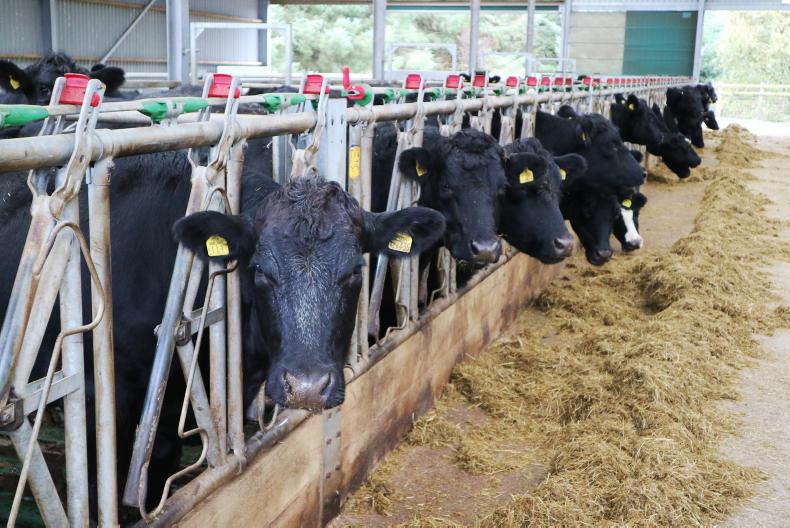Livestock farmers running short on winter fodder should consider carefully the nutritional value of silage before purchasing additional forage this winter.
As silage quality varies, there is a risk that farmers will over-pay for fodder, warned Dr Norman Weatherup, speaking at the first of a series of winter feeding meetings this week organised by CAFRE.
For farmers facing a shortage, the starting point is to complete a fodder budget. This can be done on paper, or online through the DAERA website.
Budget
To work out how much silage is in a clamp, multiply the pit length by width and height. If measured in metres, multiply by 0.68 for silage at 25% dry matter(DM).
If measured in feet, divide the volume by 52 (25% DM) to give the relevant tonnage.
The next stage is to calculate how much silage is consumed each month and how much is required to cover the winter period.
A suckler cow in milk will consume 1.2t of silage/month, dairy cows 1.5t/month and dry cows 1t/month. Weanlings will consume approximately 0.8t, with stronger stores eating 1t/month.
Options to reduce forage demand include selling off surplus stock, culling empty and unproductive stock, drying off cows earlier than planned and selling more cattle as stores.
Relative feed value
Feeding higher meal levels to cows in milk and finishing cattle will also reduce silage demand. How cost-effective that is depends on the price of a ration and relative feed value.
Feeds are normally compared with the price of barley to determine if they are value for money. At current prices of £174/t for dried barley, maize meal is worth a maximum of £209/t.
However, it is currently selling at £185/t, making it good value for money. Gluten is also good value at £170/t, while soya hulls at £178/t is currently priced at close to what it is worth.
As barley increases in value, these feeds become better value at the outlined prices, and vice versa.
Fodder
Silage is more difficult to value than concentrate, due to variability in the amount of water present. Taking barley at £174/t and soya at £310/t, good-quality silage (25% DM+, 11.5 ME and 15% protein) is worth up to £49/t.
Average-quality silage (20% DM, 10.5 ME and 13% protein) is worth up to £35/t. Poor-quality silage (18% DM, less than 10 ME and 11% protein) is worth up to £29/t.
For farmers looking to purchase additional forage, if silage is more expensive than the prices outlined above (set relative to barley at £174/t), they would instead be better off buying concentrate feed.
In addition, meal is a more consistent feed, and will deliver improved animal performance over average or poor-quality silage.
Late season
During his presentation, Weatherup also had some advice for farmers who managed to make silage in October and early November.
Where bales were made, he said that they should be used up as quickly as possible, given that they are likely to go out of shape, allowing air inside and leading to spoilage.
Bales are also likely to heat when opened, so each bale should be consumed as quickly as possible.
Adding molasses is likely to encourage animals to start eating the forage, but it is expensive and might not improve total intakes.
Finally, given the risks of soil contamination, cattle fed the material should be up-to-date with clostridial vaccinations.






 This is a subscriber-only article
This is a subscriber-only article










SHARING OPTIONS: